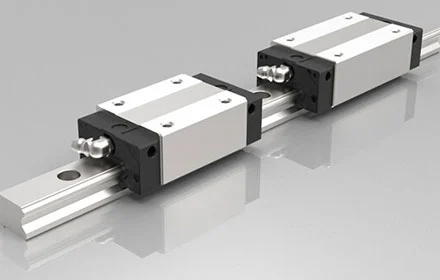Automation has become an integral part of numerous industries, revolutionizing production processes and streamlining operations. Key to this efficiency lies in the role played by various components and technologies, including the linear motion modules. These indispensable modules have transformed the way machinery and equipment function, facilitating smooth, precise, and reliable movements in automated processes. In this blog, we dive deep into the world of linear motion modules, exploring their significance, applications, and the promising future they hold in industrial automation.
Linear motion modules, also known as linear actuators, are versatile components intricately designed to convert rotary motion into linear motion. These modules find applications across a wide range of industries, from automotive manufacturing to packaging, robotics, and aerospace. The fundamental principle behind these modules is the conversion of rotational power from a motor into linear motion, enabling machines and equipment to move along a straight line with utmost accuracy and precision.
Linear motion modules typically consist of a guide system, a drive mechanism, and a load-bearing carriage. The guide system ensures smooth movement and reduced friction, while the drive mechanism converts the rotary motion of a motor into linear motion. This combination allows linear motion modules to execute highly precise movements, capturing the smallest details and performing tasks with exceptional efficiency.
Automation necessitates the highest level of precision and repeatability. Linear motion modules play a crucial role in this quest for perfection, ensuring that automated processes function seamlessly. These modules provide numerous benefits that enhance overall automation performance.
One key advantage lies in their ability to move heavy loads effortlessly and precisely. By efficiently converting motor power into linear movement, linear motion modules allow for the manipulation of objects of varying sizes and weights, contributing to increased productivity and reduced human intervention.
Furthermore, linear motion modules are designed with built-in feedback mechanisms, ensuring accurate positioning and velocity control. This precision proves invaluable in applications such as pick and place operations, assembly lines, and quality control processes. Additionally, the modular design of these components enables easy integration into existing systems, making them adaptable to a wide array of automation setups.
As industries continue to embrace automation, linear motion modules find themselves in the spotlight, poised for significant advancements. With the rise of Industry 4.0 and the Internet of Things (IoT), these modules are becoming increasingly intelligent and connected.
Advanced linear motion modules now integrate sensors and data collection capabilities, allowing for real-time monitoring and optimization. With this connectivity, they can seamlessly communicate with other components in an automated system, enabling efficient decision-making and ensuring optimal performance.
Furthermore, the incorporation of predictive analytics and machine learning algorithms will enable linear motion modules to learn from operational data, enhancing predictive maintenance capabilities and prolonging their lifespan.
In conclusion, linear motion modules stand as a critical element in the realm of automation, playing a pivotal role in achieving accuracy, consistency, and efficiency. From the dynamic assembly lines of automotive manufacturers to the intricate precision of robotics, these modules enable a world of motion that enhances productivity and revolutionizes industry. As technology continues to evolve and automation becomes increasingly prevalent, the role and impact of linear motion modules are set to expand, ensuring a future where automation reaches unprecedented levels of performance and sophistication.

![CSK Motion Technology [Exhibition Site] - 2024 ITES Shenzhen Industrial Expo CSK Motion Technology [Exhibition Site] - 2024 ITES Shenzhen Industrial Expo](/uploads/image/20230711/10/selection-of-lubricating-oil-and-viscosity-of-linear-slide-rails_1689041392.webp)
